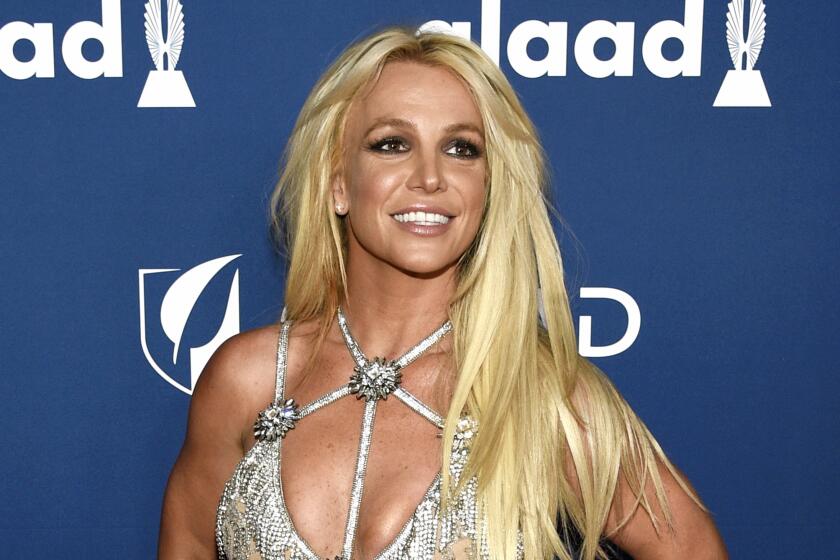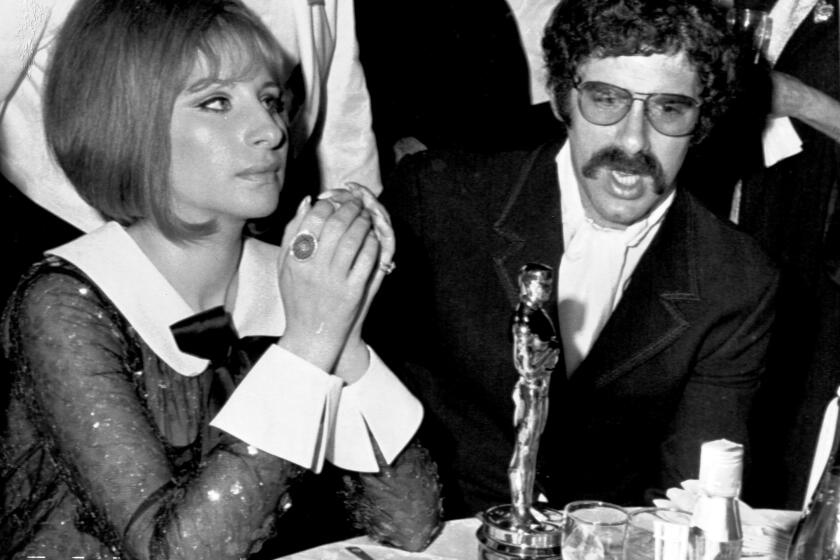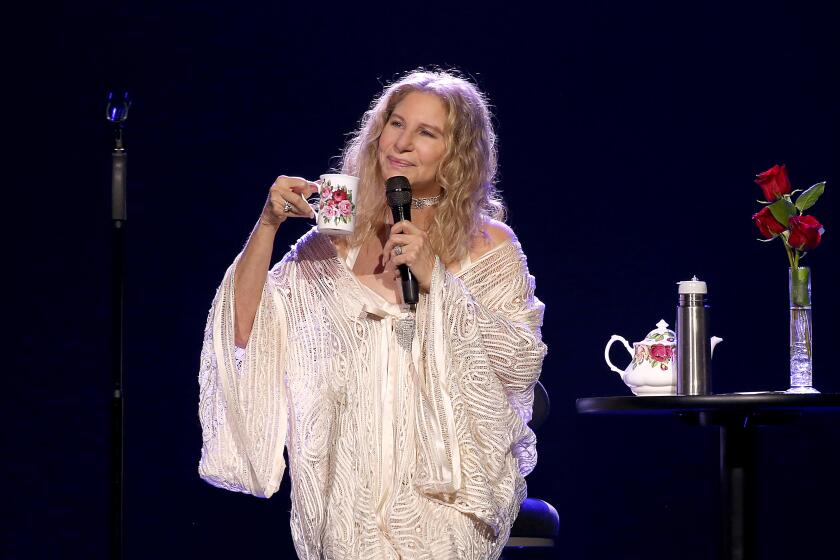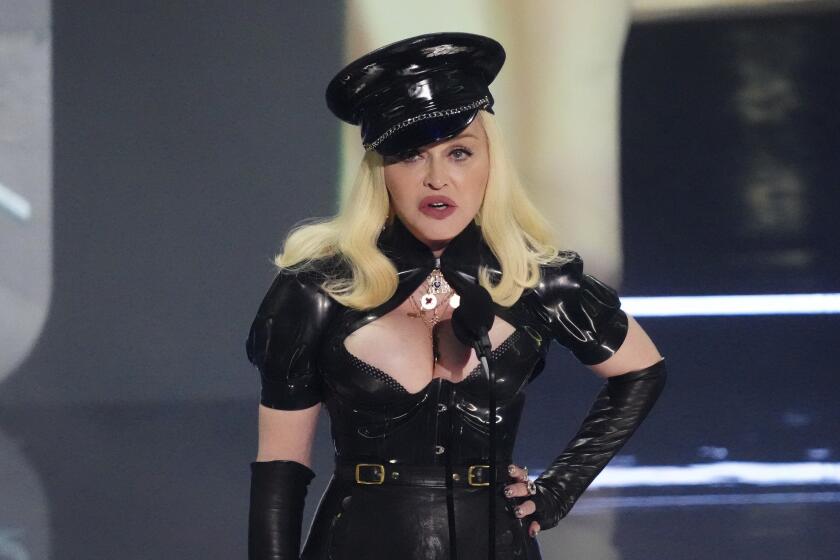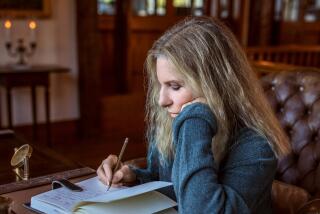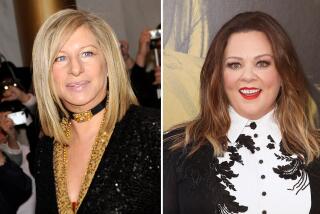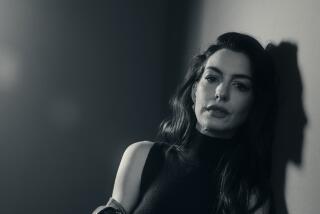Love affairs, the diva thing and that nose: Takeaways from Barbra Streisand’s huge memoir
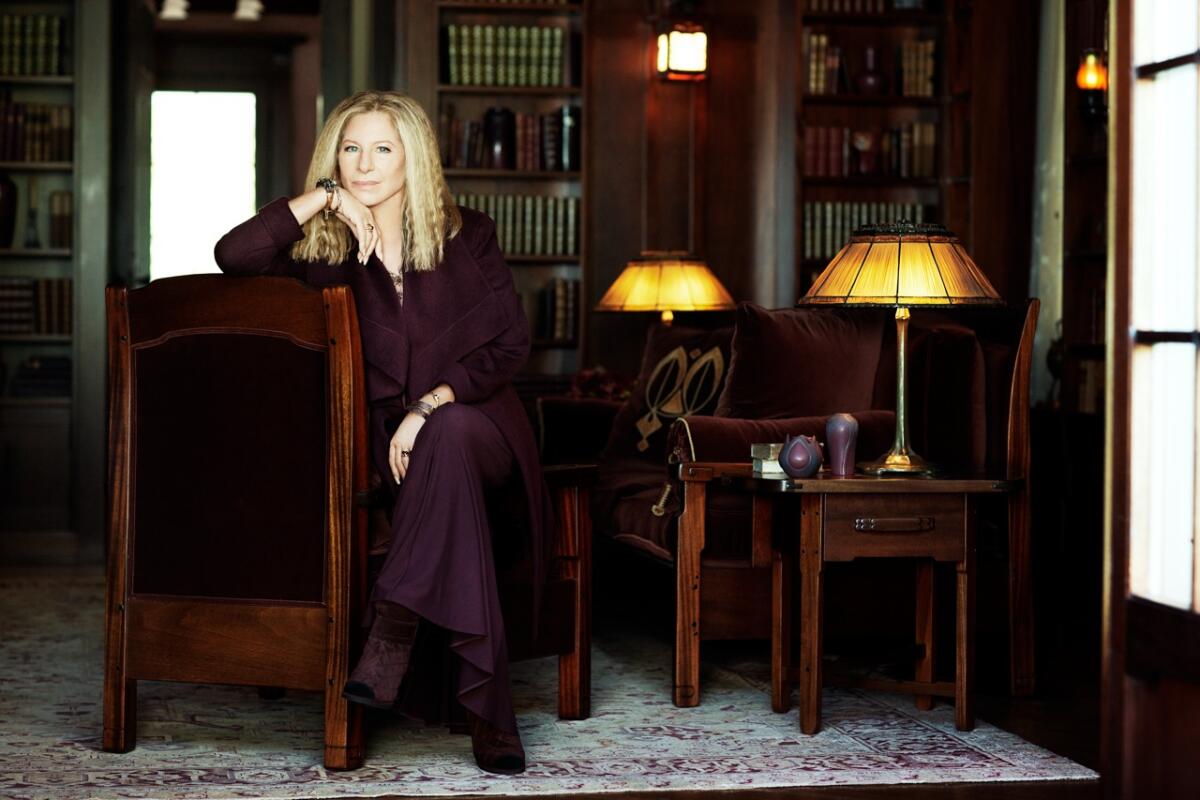
On the Shelf
My Name is Barbra
By Barbra Streisand
Viking: 992 pages, $47
If you buy books linked on our site, The Times may earn a commission from Bookshop.org, whose fees support independent bookstores.
After a career of more than six decades, Barbra Streisand is finally ready to set the record straight about it all in a Bible-sized memoir that spans from her humble beginnings in a Brooklyn housing project to the Hollywood fame that enveloped her life. Over nearly 1,000 pages, “My Name Is Barbra” dispels rumors and myths but doesn’t hold back on scintillating tales of love affairs, on-set drama and unfiltered anecdotes about her discomfort with fame.
The EGOT-winning actor-singer-director-etc. doesn’t seem to spare any details, recalling casting decisions, feuds, creative choices and every other element of the artistic process. Her Hollywood history is often very inside-baseball, but the page count allows her to have the last word on her life and career. Along the way, she mines her archives and analyzes reviews, pushing back on what she feels has been unfair criticism. She isn’t being bitter — well, most of the time — she’s just being honest. Below are some salient points of contention and what Babs has to say about them.
Britney Spears’ memoir, “The Woman in Me,” will be released on Oct. 24. The book includes details about her relationship with Justin Timberlake and her career.
Her relationship with her nose — it’s complicated
“People kept telling me, ‘Get it fixed,’’ she writes in her memoir of her most famous asset. Streisand recounts the many colorful and/or offensive descriptions journalists have used, including “seasick ferret” and an “amiable anteater.” “Sometimes it felt like my nose got more press than I did,” she teases.
For the cover art for Streisand’s 1974 album “The Way We Were,” the art department initially removed the bump on her nose — she wasn’t having it. “If I wanted a nose job, I would have gone to a doctor,” she writes.
She has certainly considered that possibility. “I liked the bump on my nose, but should I consider a minor adjustment ... just straighten it slightly at the bottom and take a tiny bit off the tip?” she wonders. “No. It was too much of a risk. And who knew what it might do to my voice?”
In the end, Streisand was too enamored of the whole thing — and her signature look — to follow through.
Her dalliances are as juicy as you imagined
Streisand is careful to be tasteful, but she does kiss and tell. Of course she plumbs her marriage to Elliott Gould — which was flanked by “flirtations” with two different “Funny Girl” co-stars, Sydney Chaplin and Omar Sharif — and her union with James Brolin (she married him for his “great teeth”). But there are also brief interludes with Pierre Trudeau, Andre Agassi and Ryan O’Neal, as well as some dalliances she struggles to remember. “Did I sleep with Warren? I kind of remember,” she writes of Warren Beatty. “I guess I did. Probably once.”
But there are some uncomfortable moments, too.
Backstage at “Funny Girl” on Broadway, her flirtation with Chaplin ended with him allegedly harassing her for over a year. “I was having panic attacks,” she writes. “I was petrified to go onstage every night. I wanted to quit, for reasons of health, but I’m not a quitter.”
Later, while filming “Hello Dolly,” she endured perplexing hostility from co-star Walter Matthau before discovering he was friends with Chaplin and had been told Streisand “treated him badly.” “Suddenly it all made sense. I was up against the boys’ club,” she writes. During the filming of “Yentl,” Streisand dealt with a spurned and angry Mandy Patinkin. “1) I would never have an affair with an actor I was directing, 2) he was married, and 3) I wasn’t at all attracted to him,” she writes. “But I couldn’t tell him he was not exactly fascinating to me.”
Elliott Gould opens up about a 1970s meeting with Elvis Presley during which the King was more interested in talking about Barbra Streisand than music.
The ‘diva’ thing is a myth, she says
Streisand always dreamed of acting and singing, but not all of the attention that came with it. From the start, she debunks the idea that bothers her most — that she was rude or difficult to work with. When she arrived in London to star in “Funny Girl,” Ray Stark threw her a welcome party — but she was so anxious about all the stars who would be there that she threw up and ended up being late to her own party. “Suddenly I had a reputation for being rude, when I was really just scared,” she writes.
Becoming a director was a form of “self-defense,” though it only enhanced the myth. “Nobody was offering me roles. I swear, people were frightened of me. I have this reputation for being difficult” that comes up “over and over again in interviews, and the mere fact of repeating it gives it credibility. What does being difficult actually mean?” She asks. “Is it that I strive for excellence in everything I do?”
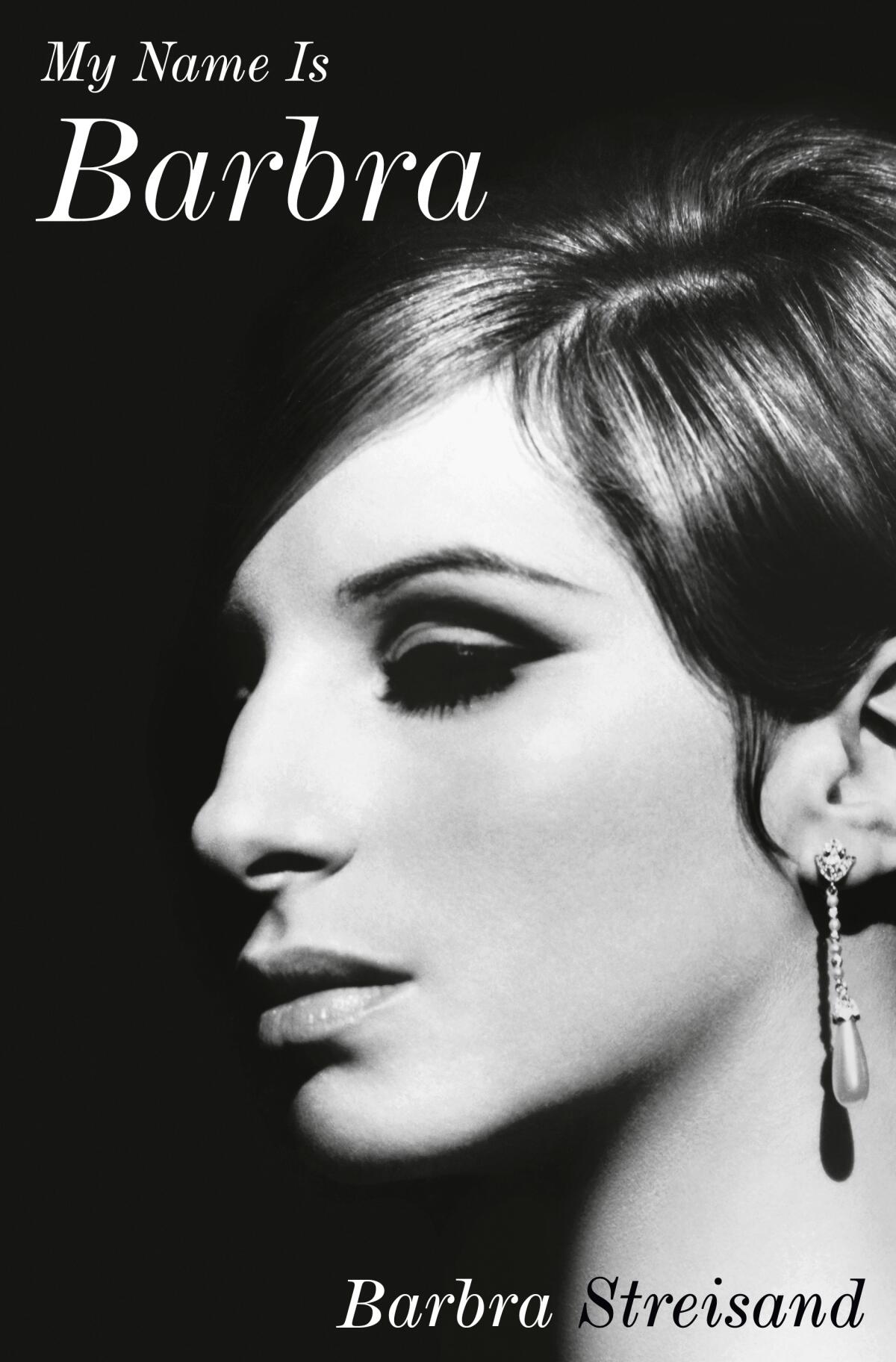
She could have slept with Brando. Instead, they became lifelong friends
Marlon Brando kissed Streisand’s back before they even had a conversation. But a year later, the two would meet again at a party hosted by Beatty’s girlfriend of the time. After Brando told Streisand she looked “bored,” the pair went to another room and had a four-hour conversation. “About three hours into the conversation, he looked into my eyes and said, ‘I’d like to f— you.’” Streisand writes. “I was taken aback. ‘That sounds awful,’ I said.”
Needless to say, they didn’t have sex — though Streisand regrets opting for a day trip rather than an overnight stay. “Now, looking back, I can hardly believe my response. How stupid! Today I would be more adventurous, but I was too insecure sexually back then, still a nice Jewish girl from Brooklyn with my mother’s admonitions echoing in my head. Free love was not my style,” she writes. They did, however, have a lifelong friendship, bonded by their dysfunctional upbringings and their passion for politics.
‘Look, it was a big success,’ Barbra Streisand says of the 2018 Bradley Cooper-Lady Gaga movie. She just cares more about originality.
Streisand’s Jewish identity is woven into the fabric of her life
Jewish identity is a through line in “My Name Is Barbra.” It helps her find common ground with a political candidate (Bella Abzug), a husband (Gould) and a career-making role (of Fanny Brice, she writes, “We both had Jewish mothers who were concerned about food and marrying us off”).
And then there was Yentl. “I identified with ‘Yentl’ immediately,” she writes. “And by the time I turned the last page, I was completely captivated by this story of a young Jewish woman in nineteenth-century Poland whose ‘soul thirsted to study Torah’ ... which is like going to college and studying history, law, philosophy, and religion. So she disguised herself as a man in order to get the kind of education that was denied to women at that time.” Streisand struggled to get the project past studio executives who “refused to see beyond the Jewish context of ‘Yentl’ to the larger theme of gender equality.”
“I’ve always been proud of my Jewish heritage,” she adds. “I never attempted to hide it when I became an actress. It’s essential to who I am. And I wanted to make this movie about a smart Jewish woman who represented so many qualities I admire.”
Can you tell she’s a workaholic?
Streisand has always struggled with downtime. She’s spent her years tirelessly working, often letting other facets of her life fall by the wayside. “After ‘Yentl’ I was wiped out … burned out. I had been pushing so hard for so long to get that movie out into the world. But as soon as I had a few days to myself, I realized something. I had been so focused on my professional life that I had totally neglected my personal life,” she writes. Similarly, after “A Star Is Born,” she wanted to take a step back from films and “just sit down and relax. But after a couple months of that, I got bored. I had to have a project.”
When she had relationship troubles — for instance with Don Johnson — she’d “withdraw” by focusing on her career. “Sometimes I use work to distract me from myself.”
Mary Gabriel’s biography, ‘Madonna: A Rebel Life,’ tracks the story of an artist well-deserving of deep analysis — even if the early years are far more interesting.
Brolin fell in love with Streisand when she insulted his hair
While she usually only touches a man’s hair if she’s working with him, Babs couldn’t help it with Brolin. “Who f— up your hair?” she asked. Instead of taking offense, he was “impressed.” “As he told me later, his first thought was, I’ve met a lot of liars in Hollywood, but here’s one person who tells the truth,” Streisand writes.
But it wasn’t all smooth sailing. While they both attended a mutual friend’s birthday party, Streisand became jealous when she saw him telling a woman she knew the same personal story Brolin told her. Streisand left the party — but it was a case of mixed signals. “He got my fax number and faxed me a note on Sunday morning: ‘Respond, or I will start faxing smut.’ That got my attention and made me laugh,” she writes.
Their romance eventually became the stuff of legend — or at least classic rock. During an appearance on “20/20” with Barbara Walters, Streisand told the host how Brolin and Streisand were in bed spooning when he whispered, “I don’t want to fall asleep,” to which the singer responded, “Why?” He explained, “Cause I’ll miss you.” Diane Warren had been watching the interview, and Streisand’s story inspired her to write Aerosmith’s 1998 hit “I Don’t Want to Miss a Thing.”
More to Read
Sign up for our Book Club newsletter
Get the latest news, events and more from the Los Angeles Times Book Club, and help us get L.A. reading and talking.
You may occasionally receive promotional content from the Los Angeles Times.
